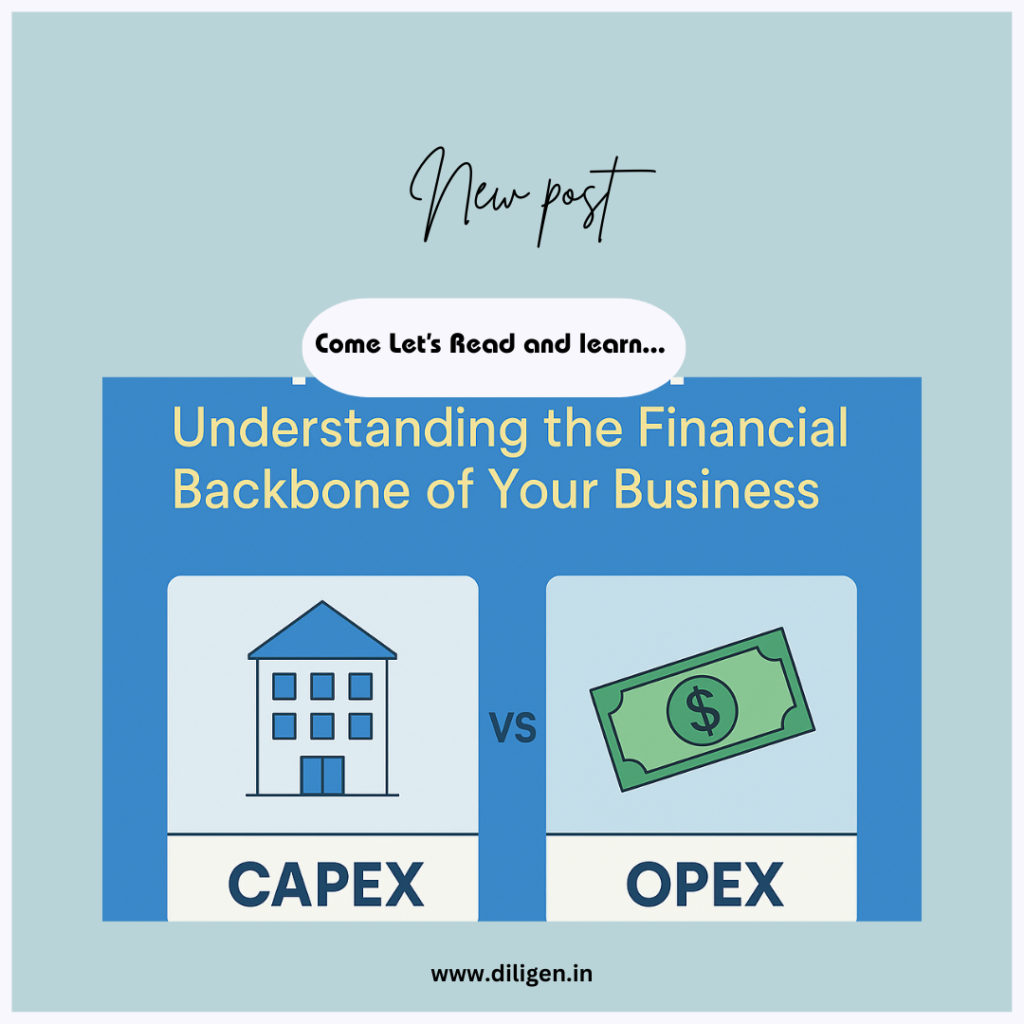💼 CapEx vs OpEx: Understanding the Financial Backbone of Your Business
Introduction:
Every business must strategically manage its finances, and knowing the difference between CAPEX (Capital Expenditure) and OPEX (Operating Expenditure) is crucial for optimal budgeting and tax planning. While CAPEX involves long-term investments in assets like equipment or property, OPEX covers day-to-day operational costs such as salaries and utilities. Understanding CAPEX vs OPEX helps businesses allocate resources efficiently, maximize tax benefits, and improve cash flow management. In this guide, we’ll break down their key differences, advantages, and how to balance both for financial success.
Defining Capital Expenditures (CAPEX)
Capital Expenditures represent long-term investments in physical or intangible assets that provide value over multiple years. These substantial outlays typically appear on balance sheets as assets before being depreciated or amortized.
Key characteristics include:
Multi-year benefit periods
Asset capitalization on financial statements
Significant upfront investment requirements
Gradual tax benefits through depreciation
Common examples encompass:
Real estate acquisitions
Manufacturing equipment purchases
Major technology infrastructure
Company vehicle fleets
Transitioning to operational costs, we find fundamentally different financial considerations.
Understanding Operating Expenditures (OPEX)
Operating Expenditures cover recurring business expenses necessary for daily operations. Unlike capital investments, these costs provide immediate but short-term value, typically expensed in the current accounting period.
Distinctive features include:
Regular payment cycles (monthly/quarterly)
Full tax deductibility within the expenditure year
Minimal upfront capital requirements
Flexible adjustment capabilities
Typical manifestations involve:
Employee compensation packages
Utility and facility maintenance
Office supplies and consumables
Marketing campaign budgets
Having established both concepts, let’s examine their comparative differences.
Comparative Analysis: CAPEX vs. OPEX
The table below highlights key contrasts between these expenditure types:
| Financial Aspect | CAPEX | OPEX |
|---|---|---|
| Financial Treatment | Capitalized and depreciated | Fully expensed immediately |
| Cash Flow Impact | Substantial initial outlay | Predictable recurring payments |
| Tax Implications | Gradual depreciation benefits | Immediate full deduction |
| Strategic Flexibility | Long-term commitment | Short-term adjustable commitments |
| Ownership Outcome | Asset accumulation | No equity building |
Beyond these structural differences, each approach presents unique advantages and limitations.
Strategic Advantages and Limitations
Capital Expenditure Considerations
Advantages:
Builds tangible business assets
Potential for asset appreciation
Enhances long-term operational capacity
Challenges:
Requires significant capital reserves
Carries obsolescence risks
Limits financial flexibility
Operating Expenditure Dynamics
Benefits:
Preserves working capital
Enables rapid scaling adjustments
Provides immediate tax relief
Drawbacks:
Lacks asset accumulation
Creates recurring cost obligations
May increase vendor dependence
Balancing these factors requires careful financial planning.
Optimal Expenditure Management Strategies
Businesses should consider these approaches when structuring expenditures:
Conduct thorough needs assessments to determine whether long-term investments or operational efficiency takes priority
Evaluate cash flow positions – OPEX often suits cash-constrained organizations
Analyze tax implications across multiple fiscal years
Align spending with strategic growth timelines
Consider hybrid models, particularly for technology investments
As organizations implement these strategies, professional guidance often proves invaluable.
Why Diligen Professional Experts Deliver Optimal Solutions
Navigating CAPEX and OPEX decisions requires specialized expertise. Diligen’s financial professionals offer:
Customized expenditure planning tailored to business objectives
Tax optimization strategies for both approaches
Cost-benefit analyses for major investments
Ongoing financial oversight to maintain optimal balance
For organizations seeking expert guidance, our team provides actionable insights.
Contact Our Specialists Today:
📧 info@diligen.in
📞 8978664671
By leveraging professional expertise, businesses can optimize their expenditure structures for sustainable growth and profitability.





